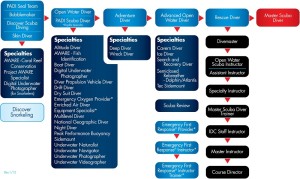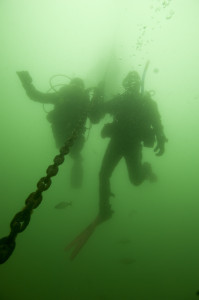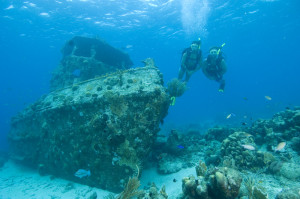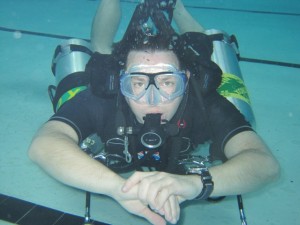PADI Master Scuba Diver Trainer
“Master Scuba Diver Trainer” The title alone sounds impressive. [Much more impressive than Course Director in many cases.] What does it mean and why should you aim for Master Scuba Diver Trainer? Let’s take a look.
Back in March, I wrote a post on Master Scuba Diver. A PADI Master Scuba Diver has completed Open Water, Advanced, Rescue, five specialties and logged fifty logged dives. You don’t have to be a Master Scuba Diver Trainer to certify a Master Scuba Diver, but it sure helps. New PADI Open Water Scuba Instructors can teach the Peak Performance Buoyancy, Project AWARE and Project AWARE-Coral Reef Conservation specialties right off. They only need to add a couple of more specialties before they can certify Master Scuba Divers, so what makes a PADI Master Scuba Diver Trainer special?
What can a PADI Master Scuba Diver Trainer do?
A PADI Master Scuba Diver Trainer (MSDT) can teach five specialties (beyond the three a new Instructor can teach) and has certified at least 25 divers. So, MSDT denotes both experience in teaching and depth in your professional diving education. You’ll recall from my post last week that I highly suggest you train with a PADI Course Director to earn those Specialty Instructor ratings. It’s better for your customers and it’s better for you in the long run, even if it might cost you a bit more for the training. And, if you’re tracking towards IDC Staff Instructor and/or PADI Master Instructor, the additional training with a Course Director will help you better prepare to achieve those goals.
Let’s take a look at some of the most popular specialties and why you should be prepared to teach them.
- Enriched Air
- Dry Suit
- Deep
- Wreck
- Peak Performance Buoyancy (Hey, as a new Instructor, you can teach this!)
- Night Diver
- Rebreather
- Sidemount
Enriched air can extend your bottom time, and we all want to spend more time diving, right? Since most of the work with enriched air diving is pre-dive planning, you can do this without dives. But who wants to do that? We’re divers, so we dive, and with enriched air we can stay down longer to enjoy the aquatic life.
It’s not cold water that’s bad, it’s getting cold. Diving with a Dry Suit keeps you warm so you can enjoy diving in unique places you might otherwise avoid. Staying warm also helps you reduce how much breathing gas (air or enriched air) you use.
Diving is an Adventure! Diving below 60 feet has a unique appeal in that we’re exploring further from our terrestrial home and there are unique things to see down there.
Diving opens up a unique historical perspective with Wreck Diving. Wrecks range from traditional ships to airplanes and even flooded towns, but diving on wrecks or penetrating wrecks requires special training to do it safely. You should be able to offer that training.
Every diver should have good buoyancy control. It’s the number one tip in Project AWARE’s ten tips for divers because it’s one of the best ways to protect the aquatic environment. [And it also protects us and our equipment from scratches, scrapes, dents, etc.] Good buoyancy control also helps you with your breathing gas consumption, as you won’t be working as hard and you can better enjoy the dive.
Night Divers explore the dark. Much like Deep Diving, Night Divers are on an extreme adventure. You can only see what your light shows, which means your buoyancy control better be tip-top.
Take only photos, leave only bubbles. What if you didn’t even have to do that? With a rebreather, it chemically scrubs your exhaled breath so you can re-breathe the gas mixture. Buoyancy control is different from what you may be used to and there are many technical aspects to rebreather training, but you’ll be diving in stealth mode. The fish won’t hear your bubbles.
What’s new in scuba gear? Sidemount! This is probably one of my favorite programs because it feels much more comfortable to me. Rather than having a single (or double) tank on your back, your tanks are slung at your sides. You have a completely redundant life support system: a second tank and regulator system. You can outfit with a pair of AL80’s, doubling a typical air supply. Or you can go with a pair of slightly smaller cylinders (steel 50’s or my favorite, a pair of AL40’s). You can also go with just a single tank slung on one side. The flexibility and redundancy make it one of my favorite programs.
There are the top Specialties being taught. Why aren’t you teaching them as a PADI Master Scuba Diver Trainer?



